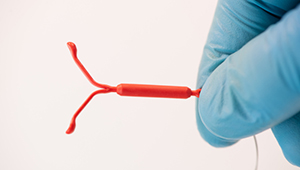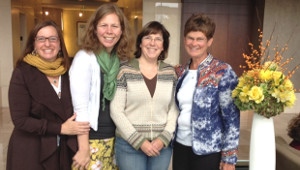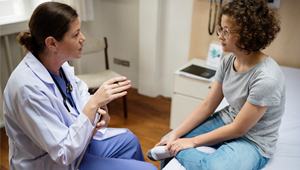Laura E. Ichikawa, MS
Biography
With more than 25 years at Kaiser Permanente Washington Health Research Institute (KPWHRI), Laura Ichikawa, MS, is known for her analytical skills, attention to detail regarding study design and data management, and knowledge in data visualization. Her experience includes observational studies, randomized controlled trials, case-control studies, and multisite analyses.
Laura is primarily focused on cancer research and women’s health. She’s has been involved with the Statistical Coordinating Center for the Breast Cancer Surveillance Consortium (BCSC), funded by the National Cancer Institute. She leads both data management activities and statistical analyses for the BCSC, where much of her work has been evaluating mammography performance for both screening and surveillance while also examining use of screening MRI (magnetic resonance imaging) and ultrasound. Laura also participated in collaborative research through the Cancer Research Network, including a widely publicized 2004 study that linked not having screening mammograms to late-stage breast cancer and, more recently, the Population-based Research to Optimize the Screening Process (PROSPR) project focusing on colorectal cancer screening. She is excited to continue her work in cancer research, including in screening, treatment, surveillance, and survival.
Laura’s earlier research with retired KPWHRI Senior Investigator Delia Scholes, PhD, included studies examining bone loss associated with the injectable hormonal contraceptive Depo-Provera in 2002 and 2005 and oral contraceptives in 2011.
Laura is a member of the American Statistical Association and its Puget Sound chapter.
Research interests and experience
-
Biostatistics
Longitudinal data analysis
-
Cancer
Biostatistics; breast cancer
-
Women's Health
Biostatistics; hormonal contraception and bone density
Recent publications
Lee JM, Ichikawa L, Su YR, Noguchi N, Hubbard RA, Kerlikowske K, Specht JM, O'Meara ES, Henderson LM, Houssami N. Comparative accuracy of digital breast tomosynthesis and digital mammography for surveillance after breast cancer treatment. J Natl Compr Canc Netw. 2025;23(11):445-452. doi: 10.6004/jnccn.2025.7057. PubMed
Chubak J, Ichikawa LE, Merchant SA, Dalmat RR, Ziebell RA, Jensen CD, Lee JK, Corley DA, Ghai NR, Green BB, Skinner CS, Schottinger JE, Breslau ES, Levin TR. Incidence of serious complications following screening colonoscopy in adults aged 76 to 85 years old. Cancer Epidemiol Biomarkers Prev. 2025 Feb 6;34(2):281-289. doi: 10.1158/1055-9965.EPI-24-0551. PubMed
Foster VM, Trentham-Dietz A, Stout NK, Lee CI, Ichikawa LE, Eavey J, Henderson L, Miglioretti DL, Tosteson ANA, Bowles EA, Kerlikowske K, Sprague BL. Supplemental breast cancer screening after negative mammography in U.S. women with dense breasts. J Natl Cancer Inst. 2025 Jun 1;117(6):1271-1275. doi: 10.1093/jnci/djae272. PubMed
Sprague BL, Ichikawa L, Eavey J, Lowry KP, Rauscher GH, O'Meara ES, Miglioretti DL, Lee JM, Stout NK, Herschorn SD, Perry H, Weaver DL, Kerlikowske K. Performance of supplemental US screening in women with dense breasts and varying breast cancer risk: Results from the Breast Cancer Surveillance Consortium. Radiology. 2024 Aug;312(2):e232380. doi: 10.1148/radiol.232380. PubMed
Lee JM, Ichikawa LE, Kerlikowske K, Buist DSM, Lee CI, Sprague BL, Henderson LM, Onega T, Wernli KJ, Lowry KP, Stout NK, Tosteson ANA, Miglioretti DL. Relative timing of mammography and MRI for breast cancer screening: Impact on performance evaluation. J Am Coll Radiol. 2024 Jul 3:S1546-1440(24)00597-0. doi: 10.1016/j.jacr.2024.06.020. Online ahead of print. PubMed
Hubbard RA, Su YR, Bowles EJ, Ichikawa L, Kerlikowske K, Lowry KP, Miglioretti DL, Tosteson ANA, Wernli KJ, Lee JM. Predicting five-year interval second breast cancer risk in women with prior breast cancer. J Natl Cancer Inst. 2024 Mar 11:djae063. doi: 10.1093/jnci/djae063 [Epub ahead of print] PubMed
White LL, Burnett-Hartman AN, Ichikawa LE, Goldberg SR, Chubak J, Spencer Feigelson H, Kamineni A. SARS-CoV-2 infection and related hospitalization among cancer survivors. Cancer Epidemiol Biomarkers Prev. 2023 Dec 21. doi: 10.1158/1055-9965.EPI-23-1303. [Epub ahead of print]. PubMed
Lee JM, Ichikawa LE, Wernli KJ, Bowles EAJ, Specht JM, Kerlikowske K, Miglioretti DL, Lowry KP, Tosteson ANA, Stout NK, Houssami N, Onega T, Buist DSM. Impact of surveillance mammography intervals less than one year on performance measures in women with a personal history of breast cancer. J Korean Radiol. 2023 Aug;24(8):729-738. doi: 10.3348/kjr.2022.1038. PubMed
Sprague BL, Ichikawa L, Eavey J, Lowry KP, Rauscher G, O'Meara ES, Miglioretti DL, Chen S, Lee JM, Stout NK, Mandelblatt JS, Alsheik N, Herschorn SD, Perry H, Weaver DL, Kerlikowske K. Breast cancer risk characteristics of women undergoing whole-breast ultrasound screening versus mammography alone. Cancer. 2023 Aug 15;129(16):2456-2468. doi: 10.1002/cncr.34768. Epub 2023 Jun 12. PubMed
Lowry KP, Ichikawa L, Hubbard RA, Buist DSM, Bowles EJA, Henderson LM, Kerlikowske K, Specht JM, Sprague BL, Wernli KJ, Lee JM. Variation in second breast cancer risk after primary invasive cancer by time since primary cancer diagnosis and estrogen receptor status. Cancer. 2023 Feb 15. doi: 10.1002/cncr.34679. [Epub ahead of print]. PubMed
Research

Study measures risks of screening colonoscopies for older adults
The findings can help guide colorectal cancer screening decisions later in life.
Research

IUD perforation: Rare but important to know about
New study results in more precise language in the federally mandated warning about this possibility.
cancer research

Using breast MRI after cancer may lead to unneeded biopsies
A Kaiser Permanente-led BCSC study is among the largest ever to evaluate adding MRI surveillance for breast cancer survivors.
cancer screening

No need to follow up simple ovarian cysts
New KPWHRI study shows that women with simple cysts are not at increased risk of ovarian cancer.



